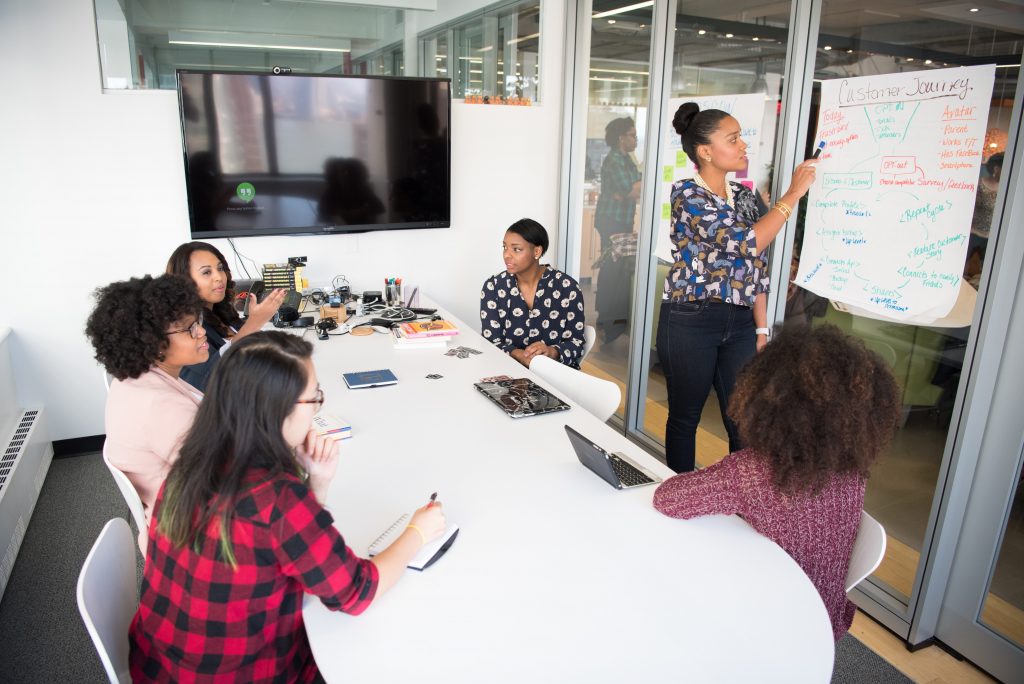Based on Morse, Nielsen-Pincus, Force, and Wulfhorst (2007)
Authors: Katherine Ciarlante, PhD Student; Jenna Beltramo, PhD Student; and Amanda Grinley, PhD Student.
As workplaces become more complex it becomes more difficult to protect employee safety and health. Even experts in a discipline don’t have all the answers. They must work together with other disciplines, multiplying the tools available to solve a problem. For example, an Industrial Hygienist could work together with a Industrial Organizational Psychology to measure occupational risks and develop a workplace safety system that is compatible with workplace culture and norms. This is called interdisciplinary partnership. Training graduate students to be able to work with multiple disciplines benefits the student, science, and ultimately, the public!
However, giving graduate students interdisciplinary opportunities is easier said than done. There are many obstacles, or barriers, that can get in the way. Luckily, a helpful article written by Morse, Nielsen-Pincus, Force, and Wulfhorst (2007) provides valuable insight and recommendations for establishing and managing successful interdisciplinary graduate-student research teams. In this blog, we will explore barriers to interdisciplinary graduate research training, discuss recommendations for overcoming those barriers, and describe the Targeted Research Training approach to interdisciplinary graduate work.
Barriers to Interdisciplinary Research:
Potential barriers to interdisciplinary research include lack of funding, lack of cooperation, lack of time, differences in methodologies, “turfism” and more. For example, due to its complexity, interdisciplinary research may take longer than traditional disciplinary work and can pose particular challenges when graduate students are held to traditional departmental graduate requirements. Many programs also lack the experience and technical expertise required to effectively support graduate interdisciplinary research. To better understand these barriers, Morse and colleagues (2007) present a three-level classification of the individual, disciplinary, and programmatic factors that can either help or hinder the interdisciplinary research process. At the individual level, three key characteristics can impact the success of interdisciplinary research processes. These personal characteristics are 1) vision, which involves the extent to which one is willing to take risks, be flexible, be creative, think across disciplines, and have a common vision, 2) dedication, which involves one’s level of commitment, patience, accountability, and professionalism, and 3) problem solving, including conflict management, experience, and communication.
At the disciplinary level, four major components aid or hinder interdisciplinary graduate research. The first component is labeled idiosyncrasies because it includes language use, from jargon and technical language that does not foster effective communication to common language that is easy for everyone in the research group to understand. The second component involves scales and units which involves alignment in variables and how they are assessed (i.e. units/standards of measurement) which can either help or hinder data collection. The third component involves models and frameworks, including relevant and useful models to guide research as well as involvement from all relevant and necessary disciplines. Finally, the fourth component is referred to as focus and theme and includes the extent to which there is a shared, focused, research question to drive the research.
Finally, Morse and colleagues (2007) identified three categories of elements which help or hinder interdisciplinary research at the programmatic level: framework, mentoring, and training and resources. In terms of framework, a broad and flexible research topic is needed, as well as a balance between depth and breadth. Mentoring requires that advisors are both experienced and committed, as well as involved in, and supportive of the drafting process. Finally, training and resources, requires that researchers have the necessary technical training, funding, and time to successfully complete interdisciplinary research, and exams must cover the interdisciplinary topic comprehensively, rather than focus too narrowly on one’s respective discipline.
Interdisciplinary Research Recommendations
Simply knowing about an obstacle isn’t enough to overcome it., Morse and colleagues (2007) presented nine recommendations regarding interdisciplinary collaboration and research. Take a look and see which strategies sound like options for your program.
- Establish an accountability strategy. By clarifying interdisciplinary team timelines, requirements, and responsibilities with an accountability strategy, team members will have an easier time understanding each other’s expectations and continue to meet them in the face of shifting individual priorities and deadlines. This may include discussing timelines and due dates for portions of projects, interim reports, and guidelines for project adjustment and conflict resolution.
- Develop formal and informal communication strategies. Aim not only to specify a formal method of when, how, and what team members should communicate about project updates, plans to complete analyses and written products, and research practices, but also to facilitate opportunities for team members to regularly interact on a more informal level. Such opportunities will help to strengthen relationships among team members and thus promote effective teamwork in the long run.
- Select team members thoughtfully and strategically. Carefully selecting your research team is essential as interdisciplinary research requires team members who must cooperate, share leadership, and demonstrate responsibility (Naiman, 1999). Team members should be selected based on their ability to be creative, flexible, and work well in dynamic settings. They should be good at brainstorming, have vision, be able to remain focused, and be prepared to make their own research plans fully contingent on the plans of the team (Janssen and Goldsworthy, 1996).
- Address issues of time and space. Team members should outline and clearly define their scales, and scale-related theories, to promote team member understanding of the interdisciplinary research challenges. This can also help expose team members to prominent concepts and norms from other disciplines, and foster problem-solving strategies. These problems should be explicitly addressed as the decisions made on time and space scales are essential for addressing research questions.
- Recognize and respect timing issues. From the very first stages of team formation it is critical to establish a project timeline and a research framework outlining the responsibilities and deadlines of each individual team member. This allows for data synthesis, analysis, and writing of results to occur in a coordinated and timely manner. It should also be noted that as researchers move from doing single discipline to interdisciplinary research, the research process may take longer.
- Define focal themes and research questions jointly and clearly. Interdisciplinary research team members should collaborate to establish agreed upon focus themes and research questions that help combine individual team contributions into a common team vision. This focal theme, and common vision, can then be used to guide future research and the successful integration of multiple disciplinary backgrounds.
- Emphasize problem definition and team proposal writing. Graduate programs should be designed to encourage research teams to spend a great deal of time and energy developing research proposals that incorporate the strategies necessary to make interdisciplinary work effective. This proposal development should include all core team members and should be directed toward developing a common research vision and problem solving strategy necessary for interdisciplinary research.
- Target interdisciplinary training. In order to address cross-disciplinary differences in research methods and processes, encourage graduate students to engage directly with interdisciplinary training and coursework. The purpose of this training is to expose graduate students to new models and methodologies and help overcome the limitations of single disciplines. This training can help team members with different backgrounds work together better and increase interest in interdisciplinary work.
- Identify mentors to focus on team integration issues. Identify team mentors that can help with interdisciplinary team research and assess the progress of individual team members as well as the team, overall. Mentors can assist with essential team functions like holding team members accountable, establishing research questions, and addressing practical or technical issues. When identifying a team research mentor, prior experience should be taken into consideration because mentors with more experience may provide more effective guidance.
The Targeted Research Training Approach
The Targeted Research Training (TRT) Program in the Sunshine Education and Research Center brings together graduate students and faculty from multiple disciplines at multiple universities to create safer, healthier, and more productive hospitality organizations. How do we integrate these recommendations in our own research?
We keep team members accountable with a project planning procedure that identifies when and how all phases of a project will be completed, making sure that the benefits of the research are spread both among the scientific community and our partnering hospitality organizations. We address issues of time and space by leveraging technology to create the option of virtual meetings and workspaces. We establish common themes and goals through fieldwork teams that address key priority issues: preventing and treating workplace injuries and illness, designing work to support health, and staying up to date with trends and changes in the workforce and the hospitality industry. We select and train team members based on complimentary skills sets that support project goals. Finally, we keep track of interdisciplinary outcomes like conference presentations and publications. We believe that this results in better training for students and better solutions for employees and workplaces!
If you are a Sunshine Education and Research Center student or faculty looking for more opportunities for interdisciplinary research or if you are a hospitality organization that could benefit from interdisciplinary solutions to employee health and safety, contact TRT at targetedresearch@ucf.edu.

For more questions about the Sunshine Education and Research Center and the Targeted Research Training Program, please contact Dr. Mindy Shoss at targetedresearch@ucf.edu.

